I never imagined I’d make it all the way to South America and visit Chile, one of the most developed countries on the continent. Chile, in South America, isn’t widely popular among Indonesians because of its distant location.
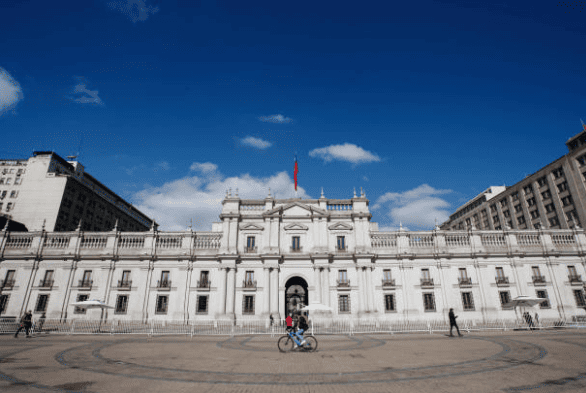
I arrived in Chile after visiting Brazil. Like Brazil, entry into Chile is visa-free for Indonesian citizens. The stay is even longer than the 30-day limit in ASEAN countries.
It was about a three-hour flight from São Paulo, Brazil, to Santiago, the capital of Chile. As we approached Chile, which sits right on the edge of the Pacific Ocean, the Andes mountains came into view.
Our flight landed in Santiago de Chile in the evening, though the sun was still shining brightly. From the airport, there’s a bus service to the city center. To save some money, I chose the bus, which dropped me off close to the hostel I’d already booked.
The location was within walking distance. The hostel was bustling with backpackers from all over the world, and I seemed to be the only one from Asia. Despite this, the atmosphere was warm and welcoming.
While resting at the hostel, I reached out to a Couchsurfing friend from Chile who had visited Batam before. I planned to stay at his apartment, but I arrived in Santiago ahead of him as he was visiting family.
Santiago is one of the major cities in South America, and among the most modern. It has a metro system in addition to buses. My friend suggested I buy a Bip! Card, which costs 1,550 CLP—quite affordable.
On my second day in Santiago, I went to the metro station to buy the Bip! Card. With it, I traveled to the Civic District in the city center. On the metro, I didn’t stand out much as a tourist; many Chileans have a Southeast Asian look.
However, most Chileans are taller, with a mix of Latin American and European features. Like in Europe, they don’t stare at strangers, which made me feel at ease.
Once in the city center, I walked to La Moneda Palace, the presidential palace of Chile. In front, the Chilean flag waved. Many tourists were taking photos with the palace in the background, including me. I even asked a policewoman to take my picture.
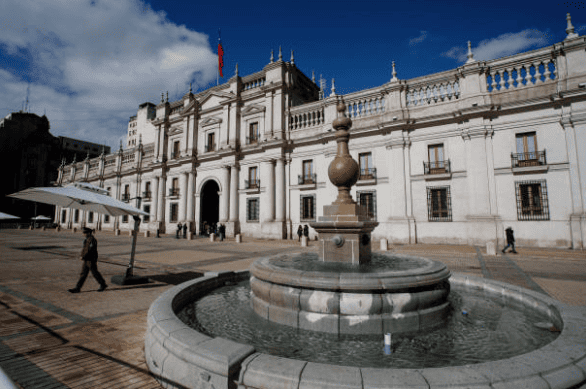
Construction of the building began in 1784, and it opened in 1805 as the “Santiago de Chile Mint House.” Its neoclassical architecture makes it especially captivating.
Behind it lies Plaza de la Constitución, a garden adorned with statues of Chilean presidents. This garden feels cooler than La Moneda’s front grounds, and many people were sitting in the shade. I joined them.
From Plaza de la Constitución, I headed to Plaza de Armas, the city’s central square surrounded by historic buildings.
On one corner stands the Cathedral Metropolitana de Santiago, established around 1800 but started in 1748. This neoclassical church is in Santiago’s historic center, facing Plaza de Armas.
Opposite the cathedral is the Museo Histórico Nacional, or National History Museum of Chile, next to Santiago’s city hall. I made time to see the museum’s collections.
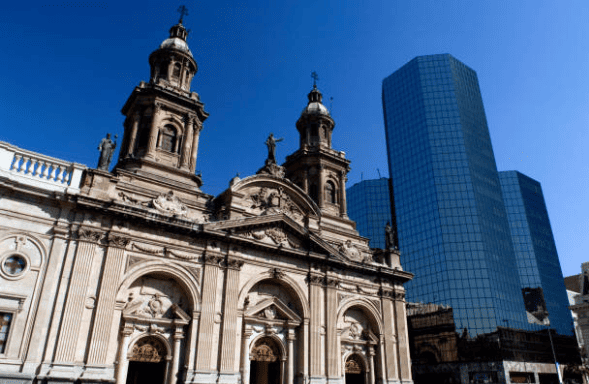
Not far from Plaza de Armas, there’s the Chilean Museum of Pre-Columbian Art, which opened on December 10, 1981. This museum exhibits art and artifacts from pre-Columbian Central and South America.
Later in the afternoon, after a break, I went to Santa Lucia Hill, located between Santa Lucia Street and La Alameda. The hill rises 69 meters above the surrounding area and spans 65,300 square meters.
The hill is fascinating, with historical structures, including a church and a fortress. It’s a popular tourist spot in Santiago, offering beautiful views of the city and picturesque historical buildings.
There’s a staircase to the top, where Terraza Caupolicán provides a 360-degree view of the city. Visitors can take in the scenery and capture photos with Santiago’s skyline.
Visiting this area is free, including the gardens, fountains, and castle. I spent quite some time here, wanting to stay until sunset. However, my body was ready for rest.
From La Chascona to Bellas Artes
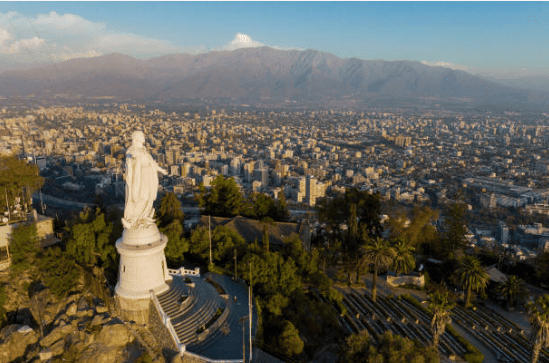
The next day, I added La Chascona to my must-visit list. La Chascona is the home of Chilean poet Pablo Neruda, built for his wife. It’s located on Fernando Márquez de la Plata, in the heart of the Barrio Bellavista.
I actually didn’t know Pablo Neruda had a home in Santiago. While searching for places to visit in Santiago, his house was one of the recommendations for tourists visiting Chile.
Once I saw the location, I was even more interested—it was close to where I was staying. It wasn’t hard to find, as it sits right at the foot of San Cristóbal Hill, a popular tourist spot in Santiago.
On my way to La Chascona, I unexpectedly stumbled upon Castillo Lehuedé, or the Red House, in Plaza Camilo Mori. The building, with its faded red color and distinctive style, really stood out.
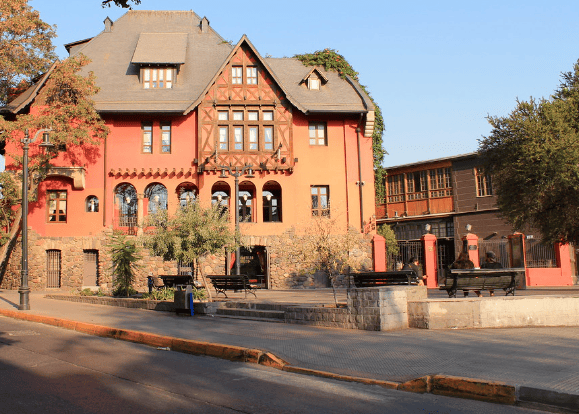
Also known as Hotel Castillo Rojo, Castillo Lehuede was built in 1923 for a Chilean businessman named Pedro Lehuedé. In 2013, it became a boutique hotel with 19 guest rooms.
Visitors passing by can enjoy the view of the Red Castle from Plaza Mori, which is right in front of its entrance. I took a moment to sit on a park bench and admire the Castillo Lehuedé.
Satisfied with the view, I continued on to La Chascona. Signs to Neruda’s house were displayed along the streets of Bellavista, an area filled with cafés. After just a few turns, I arrived at La Chascona.
In this upscale neighborhood, Pablo Neruda built his home in 1953. The house has since been transformed into a museum, preserving the main building. The collection is entirely dedicated to Pablo Neruda and his wife, Matilda.
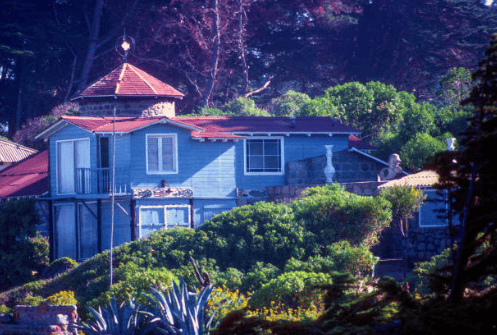
Behind it, San Cristóbal Hill rises as part of Santiago Metropolitan Park. I walked up to the hill’s entrance, which was already buzzing with visitors.
There’s a lot to see and do on San Cristóbal Hill. To go up, you can walk, take the funicular, ride a cable car, or drive. There’s a special gate for cars, while the funicular and cable car have a fee. Walking is free.
At the base of San Cristóbal Hill, there’s Chile’s National Zoo, Zoológico Nacional, a Japanese-style garden, and various other parks. At the top, you’ll find two swimming pools, Piscina Tupahue and Piscina Antilén.
Also, there’s a 22-meter statue of the Virgin Mary at the peak of Cerro San Cristóbal, near a small chapel where Pope John Paul II once prayed and blessed the city of Santiago. There’s also an observation deck offering views of Santiago.
Not far from the hill, I visited the Chilean National Museum of Fine Arts. This museum is one of the major centers of Chilean and South American art.
Located in Santiago’s Parque Forestal, the Museo Nacional de Bellas Artes is next to the Museum of Contemporary Art. Founded in 1880, the Palacio de Bellas Artes is a blend of Neoclassical and Baroque styles, with Art Nouveau details and metallic architectural touches.

Entrance is free, and there are plenty of exhibits to see. Even in the main hall, you’re greeted with stunning installations and sculptures. Still on the first floor, there’s a spacious room featuring beautiful compositions by Chilean expressionist painter Israel Roa.
In another gallery, among the artworks, are some fascinating portraits of the Liberator Bernardo O’Higgins, created by painter José Gil de Castro, originally from Peru and later a Chilean citizen.
The museum’s collection includes not only Chilean artists but also works by Italian and Spanish artists, along with African sculptures that enhance the Chilean National Museum of Fine Arts’ collection.
Although I didn’t get to see everything, I was satisfied with what I saw. Tired from the museum visit, I ended the day by unwinding in a sauna, refreshing my body and relaxing my tired muscles.

Dive Into Anything
Post-Cycle Therapy (PCT) is a critical component of any steroid
cycle, especially for individuals using Testosterone Enanthate
(Test E) at doses of 250-300mg over a period of 10-14 weeks.
PCT ensures that your body recovers properly by resetting
hormonal balance and preventing the development
of hormonal imbalances that could otherwise lead to testicular
atrophy or other negative side effects.
Here’s what you need to know about PCT for Test E:
When to Start PCT?
PCT should be initiated approximately 4-6 weeks after
the completion of your steroid cycle. This allows
sufficient time for steroids to clear from your system and prevents
prolonged suppression of your body’s natural hormone production.
Components of a Basic PCT Regimen
1. **Clomid or Arimidex:** These are the primary medications used in PCT.
Clomid helps stimulate endogenous testosterone production, while Arimidex is used to suppress estrogen levels, which can otherwise cause side effects like gynecomastia.
2. **Dosage and Duration:** Clomid is typically taken at a dosage of 100-150mg per day
for around 4-6 weeks, depending on the individual’s response.
Arimidex is usually administered once daily, starting
at a low dose (0.25mg) and gradually increasing if necessary.
3. **Supplements:** In addition to medications, supplements like Vitamin D, antioxidants,
and calcium can aid in recovery and support overall health during PCT.
Possible Complications
Some individuals may experience side effects or complications during PCT, such
as mood changes, fatigue, or even a brief period of
testicular atrophy. It’s important to monitor
these closely and consult with a healthcare professional if any concerns arise.
How to Ensure Success
1. **Consistency:** Stick to the prescribed regimen and
do not deviate without consulting your doctor.
2. **Monitoring:** Regular blood work can help assess hormone
levels and ensure that PCT is working as intended.
3. **Patience:** Recovery takes time, so be patient and allow your body to heal naturally.
Anonymous Browsing: Why and How?
Want to browse the internet anonymously? Whether you’re looking to protect your privacy online or simply want to avoid tracking, there are several methods available
to achieve this. Using a VPN is one of the most effective ways to ensure your online activity remains private.
VPNs create a secure connection between your device and a remote server, masking your IP address
and encrypting your data.
Other methods include using the Tor browser, which operates on the decentralized Tor network, or enabling incognito or private browsing modes
in your web browser. These tools help safeguard your online privacy and allow you to browse anonymously without leaving
a trace of your activity.
Browsing anonymously can be particularly useful for individuals who value their online
privacy or wish to avoid data collection by websites
and advertisers. It’s a simple process that can be done
with just a few clicks, ensuring you stay secure
while exploring the web.
Here is my webpage; extreme steroid use (https://links.gtanet.com.br/finleymenhen)
70918248
References:
steroids to get ripped fast (zirconcomic.com)
70918248
References:
are steroids worth the risk, toycarland.Com,
I have been browsing online greater than 3 hours these days, but I never discovered any fascinating article like yours. It’s beautiful value enough for me. Personally, if all webmasters and bloggers made good content as you did, the web might be much more helpful than ever before.